Exploring Nanyan Palace: The Enchanting Blend of Nature and Culture
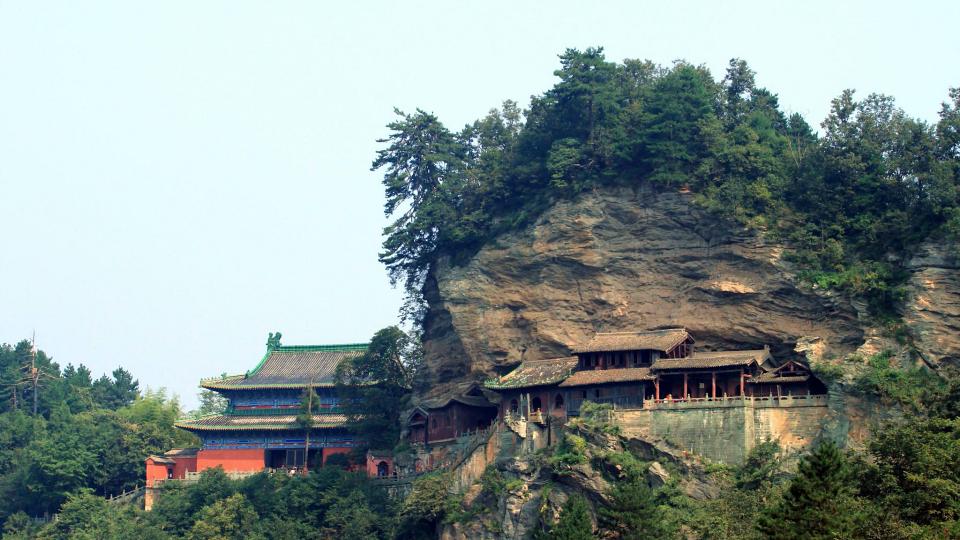
An Essential Guide to Visiting Nanyan Palace
In This Guide
- An Essential Guide to Visiting Nanyan Palace
- The Rich History and Legends of Nanyan Palace
- Main Highlights: What You Absolutely Can’t Miss
- Planning Your Visit: A Practical Guide
- Tickets: Prices, Booking, and Tips
- How to Get There: A Complete Transportation Guide
- Local Cuisine and Accommodation Nearby
- Frequently Asked Questions
- Final Thoughts on Your Trip
Nestled amidst the breathtaking landscapes of Wudang Mountain, Nanyan Palace (南岩宫) is a remarkable testament to China’s rich historical tapestry and spiritual heritage. Constructed during the Yuan Dynasty, this architectural gem is perched dramatically on a cliff, offering visitors not only a glimpse into the past but also awe-inspiring views of the surrounding verdant hills and valleys. Often compared to the famed Hanging Temple of Hengshan, Nanyan Palace embodies the essence of ancient Chinese craftsmanship and Taoist philosophy.
Legends speak of the legendary Taoist figure Lü Dongbin having practiced here, adding to the palace’s mystique and allure. As you traverse its hallowed halls, you’ll encounter significant structures like Tianyi Zhenqing Palace, Dadian, and Liangyi Hall, each steeped in stories of devotion and enlightenment. The palace’s enchanting surroundings feature notable landmarks such as Feisheng Cliff and Longxiangxiang, inviting exploration and reflection.
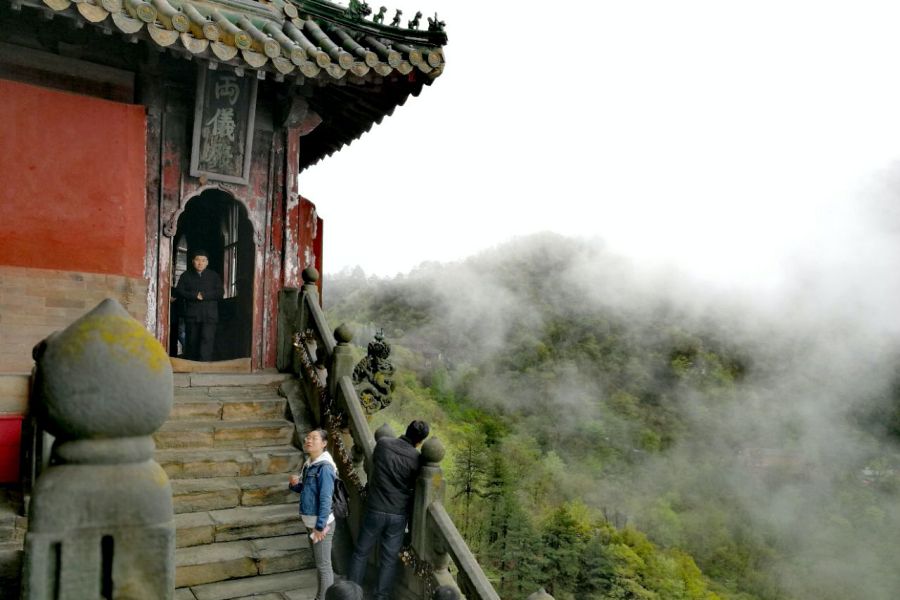
Nanyan Palace.
Visiting Nanyan Palace is not merely a journey to admire historical architecture; it’s an immersive experience that connects you with ancient traditions and the spiritual essence of Taoism. Whether you’re a history enthusiast, a lover of nature, or simply seeking a peaceful retreat, Nanyan Palace promises an unforgettable adventure that resonates deep within the soul.
To ensure you make the most of your visit, here’s a comprehensive guide to help you navigate this sacred site, uncover its secrets, and appreciate its profound significance in Chinese culture.
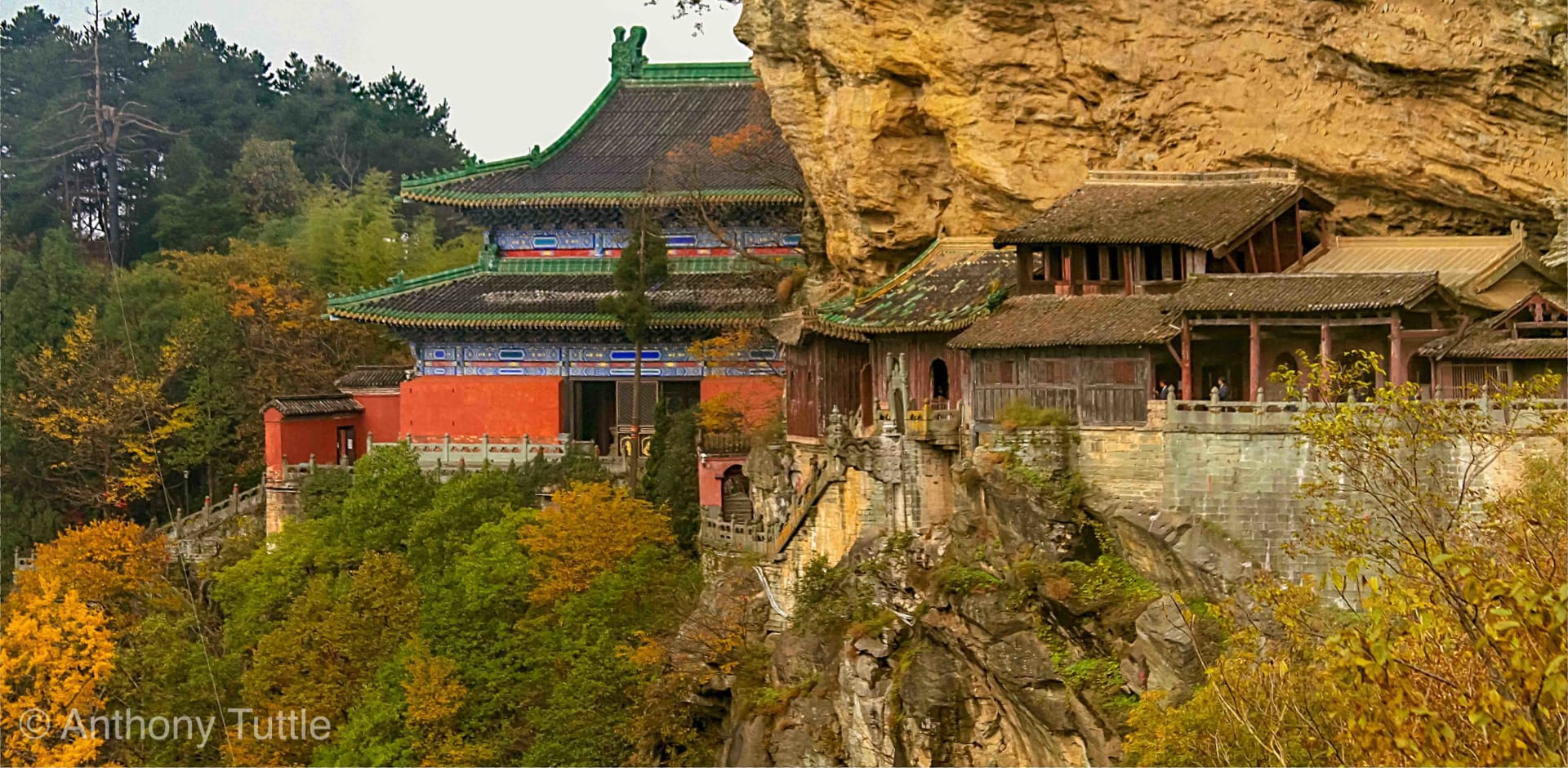
Nanyan Palace.
The Rich History and Legends of Nanyan Palace
Nanyan Palace, nestled majestically on a cliff in the heart of Wudang Mountain, is a prime example of the harmonious blend of nature and architecture that defines much of Chinese cultural heritage. Its construction dates back to the Yuan Dynasty, specifically in the 22nd year of the dynasty (around 1285 AD), a period marked by significant advancements in arts, culture, and religion in China. This remarkable palace, comparable in allure to the renowned Hanging Temple of Hengshan, showcases the profound spiritual significance of its location, which is steeped in rich history and captivating legends.
Architectural Marvel
The palace is a stunning architectural feat, ingeniously built into the rugged cliffs of Wudang Mountain. As visitors approach, they are greeted by the sight of its graceful structures, including the Tianyi Zhenqing Palace (Shidian), Dadian, and Liangyi Hall, all surrounded by lush greenery that enhances its ethereal beauty. The setting provides a serene backdrop, inviting travelers to reflect on the natural splendor and intricate craftsmanship that went into creating this sacred space.
Cultural Significance
Nanyan Palace is not just an architectural wonder; it is also a vital hub of Taoist culture. According to legend, it is said that Lü Dongbin, one of the Eight Immortals in Taoist mythology, practiced Taoism here. His presence imbues the site with a sense of spiritual reverence, attracting practitioners and visitors alike who seek enlightenment and tranquility. The palace is also home to the “Dragon Head Incense,” a prominent stone carving that extends out from the cliff, symbolizing the connection between the earthly and the divine.
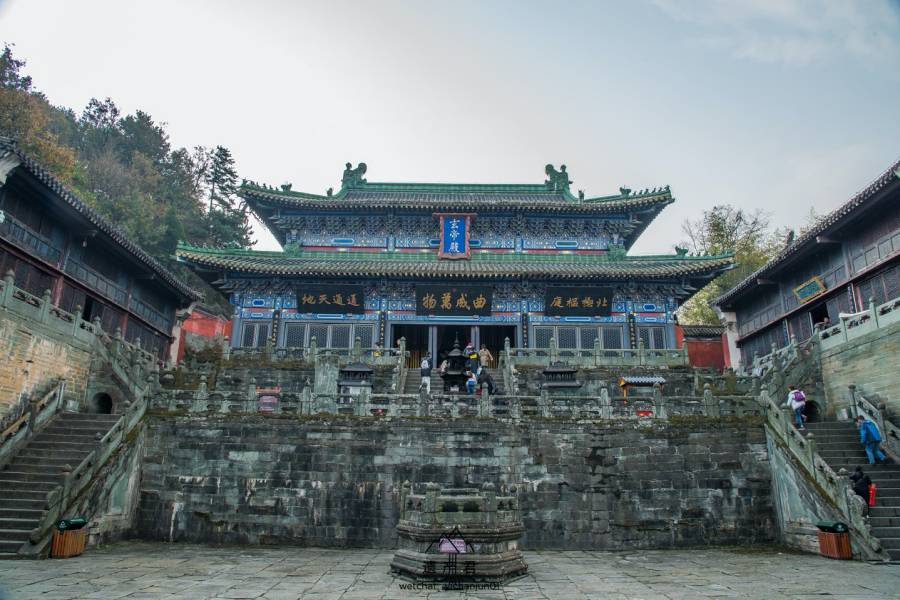
Nanyan Palace.
Legends of the Emperor Zhenwu
One of the most compelling legends associated with Nanyan Palace is that of Emperor Zhenwu, a significant figure in Taoist belief who is often depicted as a guardian against evil and a bringer of peace. Local lore suggests that the emperor ascended to the heavens from this very site, further embedding Nanyan Palace into the tapestry of Taoist legend. His stories are celebrated through various rituals and performances held within the palace, emphasizing the ongoing spiritual practices that continue to thrive in this ancient locale.
A Journey Through Time
Exploring Nanyan Palace is akin to stepping back in time. The existing structures, while having undergone renovations to preserve their integrity, still resonate with the echoes of centuries past. Visitors often describe the experience as transcendent, as they walk through the halls and gaze upon the landscapes that have inspired poets, artists, and spiritual seekers for generations.
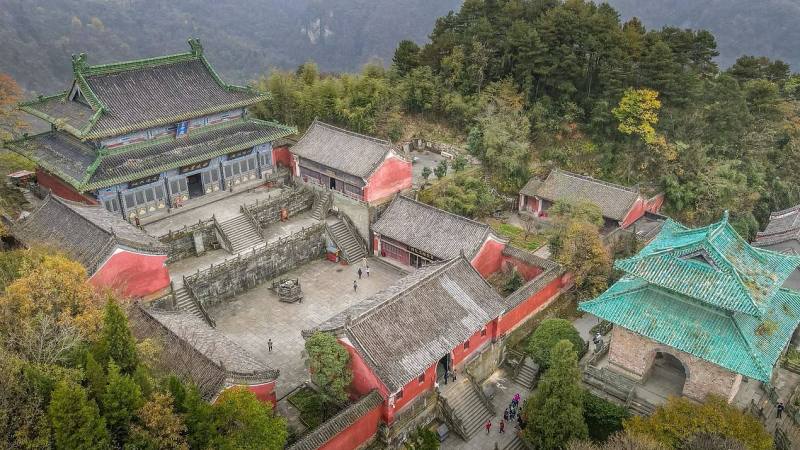
Nanyan Palace.
Visiting Nanyan Palace
For travelers interested in Chinese history and culture, a visit to Nanyan Palace offers an unforgettable experience. The journey to the palace is an adventure in itself, with transportation options ranging from trains and buses to cable cars that provide breathtaking views of the surrounding mountains. Once at the palace, visitors can take their time to explore the main buildings and the revered natural attractions nearby, such as Feisheng Cliff and Longxiangxiang.
Conclusion
In summary, Nanyan Palace is not merely a destination; it is a profound intersection of history, spirituality, and artistry. Whether you are drawn by the legends of Emperor Zhenwu, the tales of Lü Dongbin, or simply the allure of its stunning architecture, Nanyan Palace promises a rich and enriching experience that connects you deeply to the essence of Chinese culture. As you stand on the precipice overlooking the majestic landscape, you will understand why this sacred site continues to captivate the hearts and minds of all who visit.
Main Highlights: What You Absolutely Can’t Miss
Discover the Unmissable Highlights of Nanyan Palace
Nestled within the breathtaking Wudang Mountain Scenic Area, Nanyan Palace (南岩宫) stands as a testament to the rich tapestry of Chinese history, Taoist culture, and stunning architecture. Built during the Yuan Dynasty, this cliffside marvel is often compared to the renowned Hanging Temple of Hengshan, both for its dramatic setting and spiritual significance. Here’s a curated list of highlights that you simply cannot miss during your visit to Nanyan Palace.
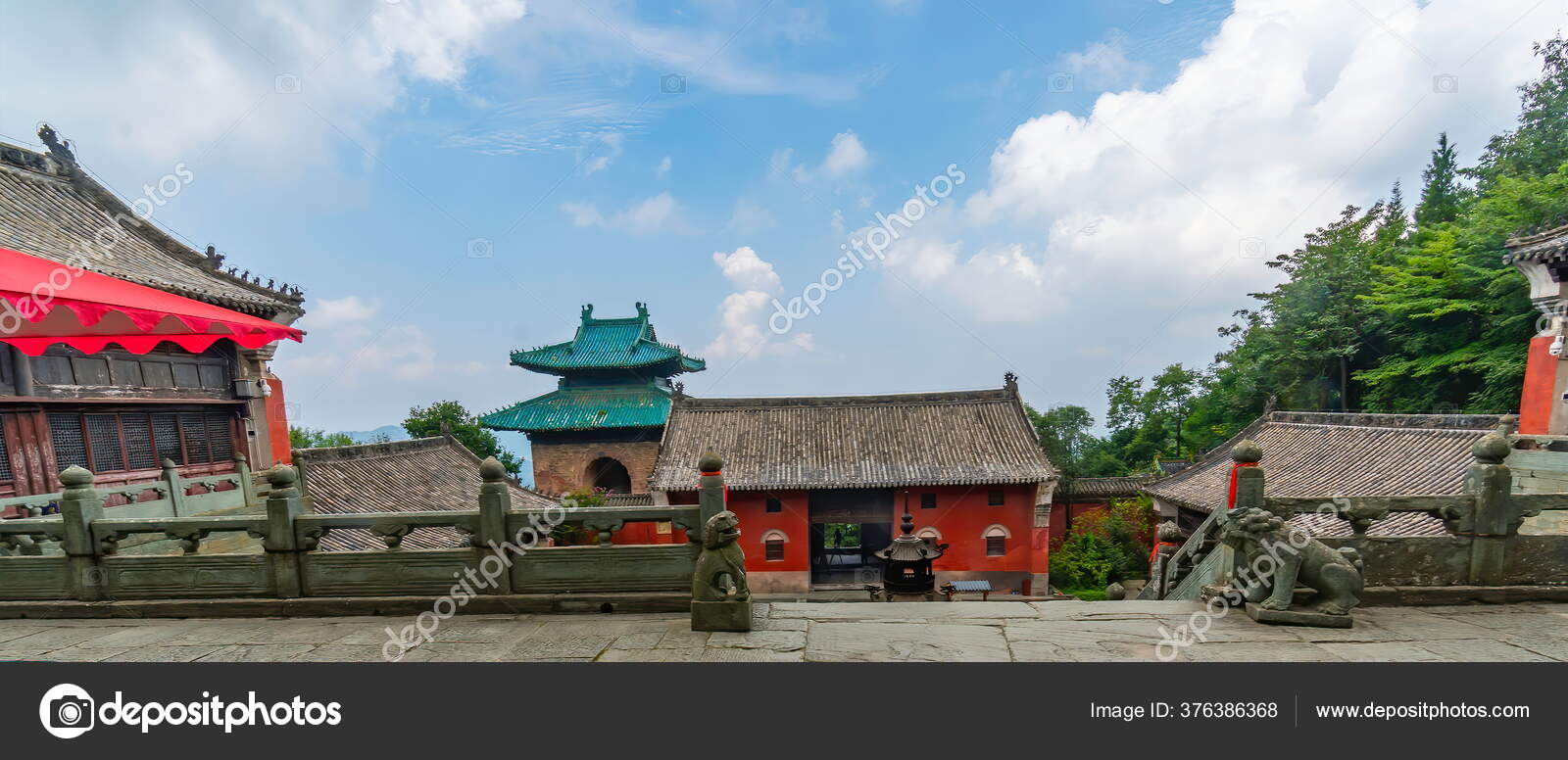
Nanyan Palace.
1. The Architecture of Nanyan Palace
The palace is an architectural wonder, seamlessly integrated into the cliffs of Wudang Mountain. As you explore, you’ll come across several key structures:
- Tianyi Zhenqing Palace (天一真清宫): This main hall is not only a place of worship but also showcases exquisite Taoist architecture.
- Dadian (大殿): The grand hall is a focal point for religious ceremonies and offers a glimpse into the spiritual practices that have flourished here for centuries.
- Liangyi Hall (两仪殿): A serene space that enhances the spiritual ambiance, perfect for quiet reflection.
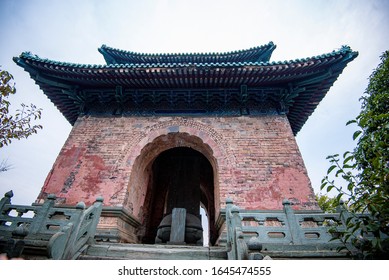
Nanyan Palace.
2. The Enigmatic Dragon Head Incense
One of the most iconic features of Nanyan Palace is the Dragon Head Incense (龙头香), a stunning stone carving that juts out from the cliff. This majestic sculpture is said to be a site where the revered Taoist figure Lü Dongbin practiced his teachings. Captivating from all angles, it provides a fantastic backdrop for photography enthusiasts.
3. Feisheng Cliff (飞升崖)
Adjacent to the palace, Feisheng Cliff offers breathtaking views of the surrounding landscape. According to legend, this is the spot where Emperor Zhenwu ascended to the heavens. The cliff’s sheer drop and panoramic vistas make it a must-visit for those seeking both adventure and tranquility.
4. Scenic Surroundings
The lush greenery enveloping Nanyan Palace enriches the experience. As you wander through the ancient trees, take a moment to appreciate the serene environment that has inspired countless poets and artists throughout history.
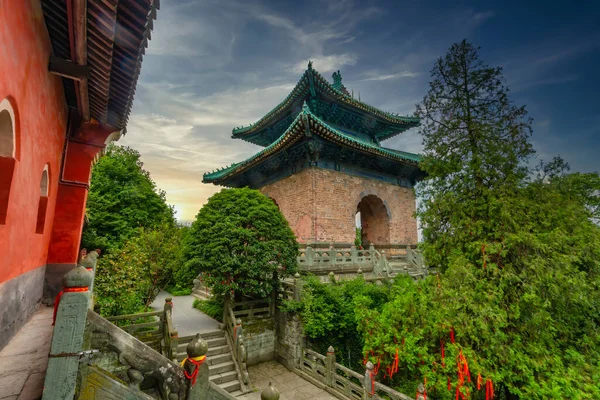
Nanyan Palace.
5. Cultural Significance
Nanyan Palace is steeped in Taoist history, serving as a spiritual hub for practitioners. Engage with the local culture by observing traditional rituals and ceremonies that take place within the palace.
6. Legendary Lore
As you explore, listen closely to the stories that echo through the halls. The legends of the area, including tales of immortals and divine ascensions, add an enchanting layer to your visit.
7. Practical Information
- Opening Hours: 7:30 AM – 5:00 PM (last entry at 4:30 PM)
- Admission: Free entry to Nanyan Palace; however, a combo ticket for the broader Wudang Mountain area is recommended.
- Visiting Time: Allocate 1-2 hours to fully immerse yourself in the beauty and history of Nanyan Palace.
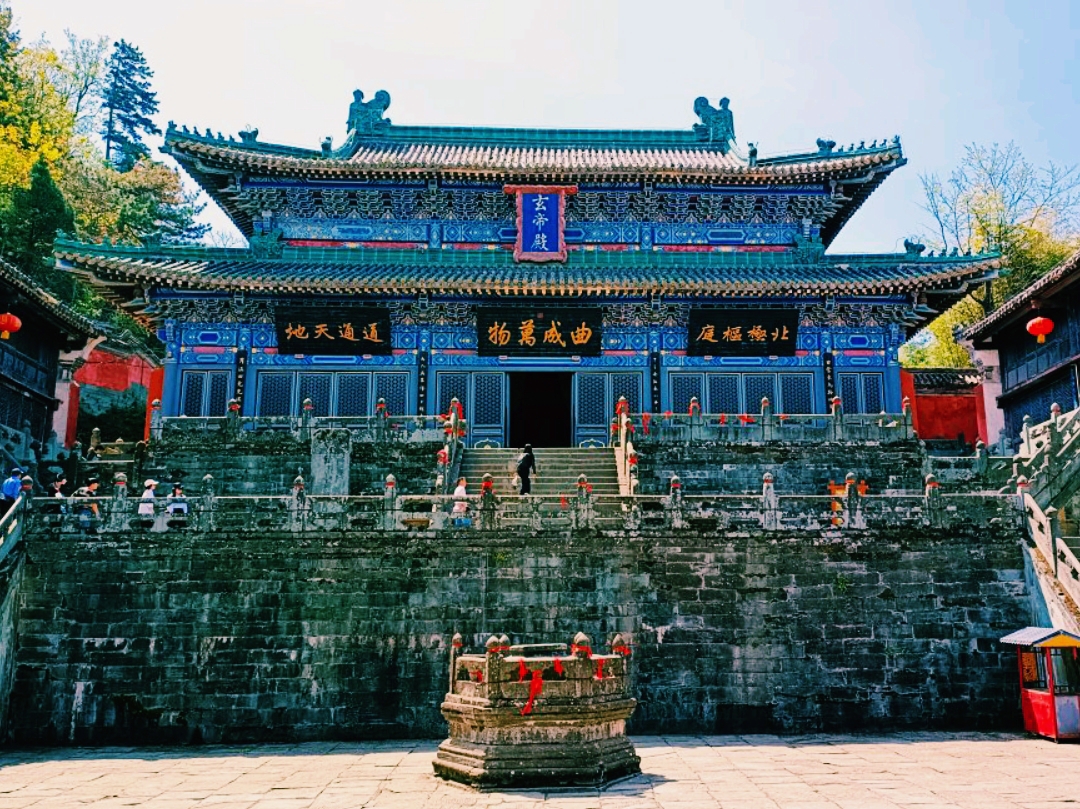
Nanyan Palace.
8. Getting There
Accessing Nanyan Palace is relatively easy. You can travel by high-speed train to Wudangshan West Station, followed by a short bus ride or taxi to the scenic area. If driving, ample parking options are available near the visitor center.
Conclusion
A visit to Nanyan Palace is not just a journey through stunning landscapes but a profound dive into the heart of Chinese Taoist culture. Each corner of the palace tells a story, and every moment spent here is a step into a world where history and spirituality intertwine. Don’t forget your camera and an open heart as you explore this remarkable site!
Planning Your Visit: A Practical Guide
Essential Information for Your Visit to Nanyan Palace
Nanyan Palace, nestled in the breathtaking Wudang Mountain Scenic Area, is a must-visit destination for those captivated by Chinese history and culture. This ancient site, renowned for its stunning cliffside architecture and rich Taoist heritage, offers an unforgettable experience. Below is a practical guide to help you plan your visit effectively.

Nanyan Palace.
Location and Getting There
Address:
Wudang Mountain Scenic Area, Danjiangkou City, Shiyan City, Hubei Province, China
Transportation Options:
– By Train:
Take a direct train from Wuhan to Wudangshan West Station. From there, you can catch Bus 301, which takes about 40 minutes to reach the scenic area.
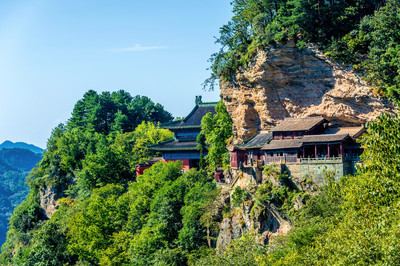
Nanyan Palace.
-
By Plane:
Fly into Shiyan Wudangshan Airport. Upon arrival, take Airport Bus Line 2 to the mountain gate. -
By Car:
If you prefer driving, the scenic area is approximately 40 minutes from downtown Shiyan. Parking is available at the visitor center, costing CNY 3/hour, capped at CNY 25/day.
Admission Fees and Opening Hours
-
Admission:
Entry to Nanyan Palace is FREE, making it accessible for all travelers. -
Opening Hours:
The palace is open from 7:30 AM to 5:00 PM, with the last entry at 4:30 PM. It’s advisable to arrive earlier to fully explore the site and avoid any last-minute rush.
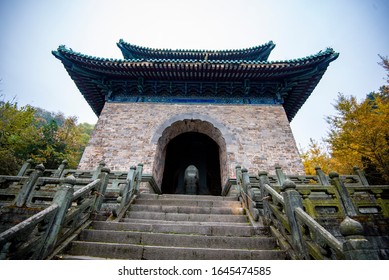
Nanyan Palace.
Suggested Duration of Visit
Plan to spend 1 to 2 hours at Nanyan Palace. This timeframe allows enough time to appreciate the intricate architecture, take photographs, and enjoy the surrounding natural beauty.
Recommended Itinerary
For a well-rounded experience, consider the following route:
1. Visitor Center
2. Taizipo – Capture stunning photos of the red-walled corridors.
3. Zixiao Palace – Explore the Ming Dynasty complex.
4. Nanyan Palace – Admire the cliffside architecture and the famous Dragon Head Incense.
5. Golden Summit – If time permits, take the cable car up for breathtaking views.
Practical Tips
-
Wear Comfortable Shoes:
The terrain can be steep and uneven, so sturdy, non-slip footwear is essential. -
Bring Cash:
While many attractions accept digital payments, some smaller vendors and services may only take cash, so it’s wise to have some on hand. -
Food and Refreshments:
Enjoy local vegetarian cuisine at nearby restaurants, offering healthy options like Taoist vegetarian meals and fresh mountain vegetables. -
Respect the Culture:
Maintain a respectful demeanor in temples, keeping noise levels low and adhering to local customs.
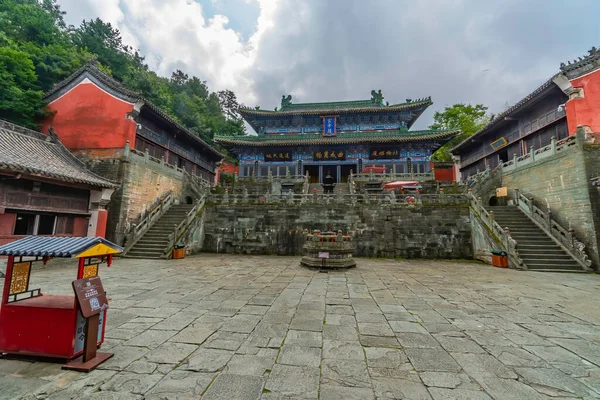
Nanyan Palace.
Nearby Attractions
While Nanyan Palace is a highlight, don’t miss these nearby sites:
– Golden Summit Taihe Palace – A breathtaking peak with panoramic views.
– Taizipo – A picturesque spot for photography along the ancient road.
– Xiaoyao Valley – A lovely area to immerse yourself in nature, where you might spot wild macaques.
Final Thoughts
Visiting Nanyan Palace is not just an exploration of a historical site; it is a journey into the heart of Taoist culture and the natural beauty of Wudang Mountain. By following this guide, you can ensure a fulfilling and memorable experience that connects you with the rich tapestry of Chinese history. Embrace the tranquility, take in the stunning landscapes, and enjoy your time at this remarkable destination.
Tickets: Prices, Booking, and Tips
When planning your visit to Nanyan Palace, it’s essential to have a clear understanding of the ticketing options, pricing, and some practical tips to enhance your experience. Nestled in the breathtaking Wudang Mountain Scenic Area, this historical site offers a unique glimpse into China’s rich cultural heritage.
Ticket Information
- Entry Fee: Admission to Nanyan Palace itself is free. However, to explore the broader Wudang Mountain area, a combo ticket is required.
- Combo Ticket Price: CNY 259 per person, which includes:
- Access to major attractions within the scenic area
- Unlimited shuttle bus rides within the site
-
Valid for three days, allowing for a leisurely exploration of this majestic region.
-
Cable Car Fees:
- One-way trip: CNY 80 per person
- Round trip: CNY 150 per person
- Recommendation: Taking the cable car is advisable for those who prefer to avoid the strenuous descent from the Golden Summit, especially since the return involves many steep steps.
Opening Hours
- General Visiting Hours: Daily from 7:30 AM to 5:00 PM, with the last entry at 4:30 PM. It’s important to plan your visit accordingly to avoid being rushed out of the site.
Booking Tips
- Advance Booking: It is highly recommended to book your tickets in advance via platforms such as Trip.com to avoid long queues, especially during peak tourist seasons.
- Cash Payments: Although many places accept digital payments, having cash on hand can be beneficial, as some smaller vendors and attractions may only accept cash.
Transportation Options
Getting to Nanyan Palace is relatively straightforward, with various transport modes available:
- By Train: Take a direct train from Wuhan to Wudangshan West Station. From there, you can catch Bus 301, which takes about 40 minutes to reach the scenic area.
- By Air: Fly into Shiyan Wudangshan Airport, and then take Airport Bus Line 2 to the mountain gate.
- Self-Driving: If you’re driving, it’s about a 40-minute journey from Shiyan City to the scenic area. Parking at the visitor center costs CNY 3 per hour, capped at CNY 25 per day.
Additional Tips
- Wear Comfortable Footwear: The terrain can be steep and uneven, so sturdy, non-slip shoes are essential for a safe and enjoyable experience.
- Plan for Weather Changes: Bring a light jacket, as temperatures can vary significantly, especially at higher elevations.
- Respect the Cultural Environment: Maintain a quiet demeanor inside temples and be mindful of the local customs and practices during your visit.
By understanding the ticketing system, transportation options, and practical tips, you can maximize your experience at Nanyan Palace and delve deeper into the spiritual and historical essence of this stunning location. Enjoy your journey through the clouds and history!
How to Get There: A Complete Transportation Guide
Navigating Your Journey to Nanyan Palace
Visiting Nanyan Palace, a stunning cliffside structure nestled in the Wudang Mountain Scenic Area, requires a bit of planning, but the journey is well worth the effort. Here’s your guide to reaching this historical gem, whether you’re coming from a nearby city or flying in from afar.
By Air
Flying to Shiyan Wudangshan Airport
The most convenient way to reach Nanyan Palace is to fly into Shiyan Wudangshan Airport (WDS). This airport has connections to major cities in China, including Wuhan. Once you land:
- Airport Bus: Take Airport Bus Line 2 directly to the mountain gate. This option is economical and takes about 40 minutes.
- Taxi: Alternatively, a taxi ride to the scenic area will take around 30 minutes and cost approximately CNY 100.
By Train
Trains to Wudangshan West Station
If you prefer traveling by train, you can take a high-speed train from various cities, such as Wuhan, to Wudangshan West Station. From the station:
- Bus: Transfer to Bus 301, which takes about 40 minutes to reach the scenic area. The bus fare is around CNY 5.
- Taxi: A taxi will take about 20 minutes and cost between CNY 30-40.
By Road
Driving to Nanyan Palace
For those who enjoy the freedom of driving, renting a car or using your own vehicle is a great option. The scenic area is about 40 minutes from Shiyan city. Here’s what you need to know:
- Parking: Park at the visitor center for CNY 3 per hour, capped at CNY 25 per day. This gives you easy access to the entrance of Nanyan Palace and other attractions.
Getting Around the Scenic Area
Once you arrive at Wudang Mountain Scenic Area, you have several options to explore:
- Shuttle Bus: A scenic shuttle bus operates within the area, allowing unlimited rides for CNY 100 per ticket. This is particularly useful for covering the larger distances between attractions like the Golden Summit and Nanyan Palace.
- Cable Car: If you prefer a leisurely ascent, consider taking the Golden Summit Cable Car. A one-way ticket costs CNY 80, while a round trip is CNY 150. This saves you the strenuous hike and offers breathtaking views along the way.
Important Tips
- Plan Your Visit: Nanyan Palace is best enjoyed in 1-2 hours. Be sure to check the opening hours, as they run from 7:30 AM to 5:00 PM, with the last entry at 4:30 PM.
- Ticketing: Entrance to the palace is free, but consider purchasing a combo ticket for other attractions in the area. This ticket costs CNY 259 for adults and includes unlimited shuttle bus rides.
- Be Prepared: Wear comfortable, non-slip shoes and bring a light jacket, as temperatures can drop in the mountains.
Now that you have your transportation guide, you’re ready to embark on an unforgettable journey to Nanyan Palace, where the rich tapestry of Chinese history and culture awaits you amidst stunning natural beauty. Happy travels!
Local Cuisine and Accommodation Nearby
When visiting the breathtaking Nanyan Palace, travelers can enhance their experience by indulging in local cuisine and staying at nearby accommodations that reflect the rich history and culture of the Wudang Mountain region. Here’s a guide to some delightful eateries and comfortable lodgings around this Taoist treasure.
Local Delicacies to Savor
Wudang Mountain is not just about stunning views and ancient temples; it also offers a unique culinary experience. Here are some must-try dishes and recommended dining spots:
-
Taoist Vegetarian Meals: Embrace the local tradition with a meal that emphasizes balance and health. Dishes typically include fresh mountain vegetables, Taihe rice (a nutritious coarse grain), and Physalis noodles, a delightful appetizer priced at around CNY 10-15.
-
Deshun Farmhouse Restaurant: Located near the Wuyaling parking lot, this cozy eatery offers hearty local dishes. Try their cured meat fried with bamboo shoots or the Shenxianye jelly, both available at CNY 40 per person, providing a delicious and filling meal after a day of exploration.
-
Taoist Health Banquet: If you are curious about the Taoist dining experience, be cautious of vague pricing at some mountain-side restaurants. Instead, opt for local recommendations or inquire about prices before ordering!
Comfortable Stays Nearby
After a day of hiking and sightseeing, a restful night is essential. Here are a couple of accommodations that offer both comfort and a cultural touch:
-
Tai Chi Hotel: Situated next to Nanyan Palace, this charming ancient courtyard hotel is a perfect blend of tradition and comfort. With rates starting from CNY 300 per night, it includes breakfast and even offers free Hanfu rentals for guests wanting to immerse themselves in local culture. The hotel’s proximity to the palace makes it an ideal spot for early risers.
-
Wudang Mountain Jianguo Hotel: For those seeking convenience, this hotel provides free parking and is just a five-minute walk from the visitor center. It’s a great choice for travelers with vehicles, allowing easy access to the scenic areas without the hassle of parking fees.
Tips for Your Stay
-
Book in Advance: Given the popularity of Wudang Mountain, especially during peak seasons, securing your accommodation ahead of time is advisable.
-
Cash is King: Many local eateries and smaller accommodations may prefer cash transactions, so it’s wise to have some on hand.
-
Respect Local Customs: While enjoying your stay and meals, remember to honor the local traditions and practices, particularly within the sacred areas of the temple complexes.
By indulging in the local cuisine and staying at one of these recommended accommodations, you will enrich your visit to Nanyan Palace and Wudang Mountain, creating unforgettable memories amidst China’s historical and cultural landscape.
Frequently Asked Questions
Frequently Asked Questions about Nanyan Palace
1. What is Nanyan Palace and its historical significance?
Nanyan Palace (南岩宫) is a stunning Taoist temple complex located on the cliffs of Wudang Mountain in Hubei Province. Constructed during the Yuan Dynasty, it is renowned for its breathtaking architecture that seamlessly integrates with the natural landscape. The site is steeped in legends, including tales of the Taoist immortal Lü Dongbin, who is said to have practiced here.
2. How do I get to Nanyan Palace?
You can reach Nanyan Palace by various means:
– Train: Take a direct train from Wuhan to Wudangshan West Station, then transfer to Bus 301 for a 40-minute ride.
– Air: Fly into Shiyan Wudangshan Airport and take Airport Bus Line 2 to the mountain gate.
– Self-Drive: It’s about a 40-minute drive from Shiyan City to the scenic area. Parking is available at the visitor center for a small fee.
3. Is there an entrance fee, and what are the opening hours?
Entrance to Nanyan Palace is free, but access to Wudang Mountain Scenic Area requires a ticket (CNY 259, which includes a shuttle bus). The area is open from 7:00 AM to 5:30 PM. Be sure to arrive before the last entry at 4:30 PM.
4. How much time should I allocate to visit Nanyan Palace?
A visit to Nanyan Palace typically takes 1-2 hours. This allows you to explore the main buildings, enjoy the surrounding nature, and take in the stunning views from the cliffside.
5. What are the must-see features within Nanyan Palace?
Key highlights include:
– Tianyi Zhenqing Palace: The main hall known for its intricate architecture.
– Dragon Head Incense: A prominent stone carving that extends out from the cliff, perfect for photography.
– Feisheng Cliff: A scenic spot offering dramatic views of the surrounding landscape.
6. Are there any restrictions or guidelines to be aware of?
While visiting, it’s important to respect the local Taoist culture. Refrain from making loud noises, especially within the temple areas, and avoid burning incense as it is currently prohibited. Always remember to carry out any trash you bring with you.
7. What should I wear and bring for my visit?
Dress in comfortable, non-slip shoes suitable for walking on uneven terrain. A light jacket is advisable, as temperatures can drop in the mountains. Don’t forget your camera for capturing the stunning views!
8. Can I find food and accommodation nearby?
Yes, there are dining options offering Taoist vegetarian meals and fresh mountain produce. For accommodation, consider staying in local guesthouses near Nanyan Palace, such as the Tai Chi Hotel, which offers traditional accommodations and breakfast. Be sure to book in advance during peak seasons!
Final Thoughts on Your Trip
As your journey through the enchanting Nanyan Palace comes to a close, take a moment to reflect on the myriad experiences that this historical gem has offered. Nestled dramatically on a cliff within the breathtaking Wudang Mountain Scenic Area, Nanyan Palace is not merely a destination; it is a portal into the rich tapestry of Chinese history, culture, and spirituality.
Embrace the Serenity of the Past
Walking through the ancient halls of Nanyan Palace, you are enveloped in a sense of tranquility that echoes the teachings of Taoism. The legends of Lü Dongbin and Emperor Zhenwu come alive against the backdrop of lush greenery and rugged cliffs. Every stone and carving tells a story, reminding you of the deep cultural roots that shape this sacred site.
Capture the Essence of Nature
The scenic beauty surrounding Nanyan Palace is a feast for the senses. From the sweeping views of Feisheng Cliff to the serene atmosphere of the surrounding forest, each moment here is an invitation to connect with nature. Don’t forget to pause and breathe in the fresh mountain air, allowing the peace of your surroundings to refresh your spirit.
Plan Your Return
While your visit may be coming to an end, the allure of Nanyan Palace and Wudang Mountain will undoubtedly beckon you back. Whether you’re drawn by the promise of sunrise views from the Golden Summit or the tranquility of the Zixiao Palace, there’s always more to discover.
Travel Tips for Future Explorations
- Visit During Off-Peak Hours: To fully appreciate the serenity, consider arriving early or later in the day.
- Capture the Details: Bring a good camera to photograph the stunning architecture and natural landscapes.
- Respect Cultural Practices: As you continue your travels, remember the importance of preserving the traditions and sanctity of the places you visit.
A Journey of Reflection
Your time at Nanyan Palace is more than just a sightseeing adventure; it is a journey of self-discovery and reflection. The serene environment and rich history encourage introspection, allowing you to return home not just with memories, but with a renewed sense of purpose and appreciation for the diverse world we inhabit.
As you leave this sacred space, carry the wisdom of Taoism in your heart, and let it guide your adventures ahead. Whether your travels lead you to other parts of China or beyond, may you always find beauty in the journey and peace in the moments of stillness. Safe travels!